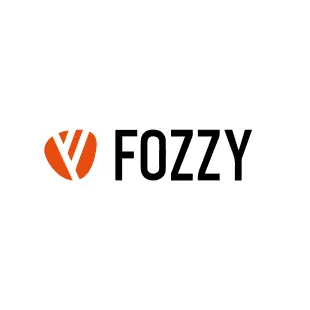
By integrating ChatGPT into transportation and logistics systems, companies can provide their customers with a more personalized and efficient service. Overall, using ChatGPT in customer service can greatly improve the customer experience by providing quick and accurate responses to their questions and concerns, in a conversational and natural way. Data privacy and disclosing personal information to another person is an awkward feelings for people.
Effectiveness of chatbots on COVID vaccine confidence and … – Nature.com
Effectiveness of chatbots on COVID vaccine confidence and ….
Posted: Thu, 25 May 2023 07:00:00 GMT [source]
Medical virtual assistants have an interactive and easy-to-use interface; this helps create an engaging conversation with your patients and ask them one detail at a time. On the other hand, with an OTP verification system, virtual assistants can ensure that only verified users schedule appointments in your facility. The gathering of patient information is one of the main applications of healthcare chatbots. By using healthcare chatbots, simple inquiries like the patient’s name, address, phone number, symptoms, current doctor, and insurance information can be utilized to gather information. So, healthcare providers can use a chatbot dedicated to answering their patient’s most commonly asked questions.
Chatbot use cases in retail
Whether patients want to check their existing coverage, apply, or track the status of an application, the chatbot provides an easy way to find the information they need. Physicians will also easily access patient information and inquiries and conveniently pre-authorized bill payments and other questions from patients or health authorities. While many patients appreciate the help of a human assistant, many others prefer to hold their information private. Chatbots are non-human and non-judgmental, allowing patients to feel more comfortable sharing sensitive medical details. Besides, they collect and manage patients’ records in a GDPR-compliant way. Chatbots are not people; they do not need rest to identify patient intent and handle basic inquiries without any delays, should they occur.
What problems can chatbot solve?
- Guide a visitor to the right place on your site.
- Identify the best product or service for their needs.
- Gather contact information for sales and retargeting.
- Gather data about customer interests and behaviour.
- Qualify a them a MLQ or SQL and link them up to a sales rep.
Radiology – AI algorithms can analyze radiology images such as X-rays and CT scans to help diagnose diseases such as pneumonia and tuberculosis. This can lead to faster, more accurate diagnoses and improved patient outcomes. AI-powered algorithms can help identify lung nodules in CT scans, reducing the chances of missing any cancerous nodules, especially in smokers or individuals with a history of lung cancer. AI algorithms can also analyze X-ray images for osteoporosis, a bone-thinning disease that makes bones brittle and fragile, making them more prone to fractures. Clinical data is the most important resource for health and medical research. It is either gathered during a course of ongoing patient care or as part of a formal clinical trial program.
Build your bot
The platform automates care along the way by helping to identify high-risk patients and placing them in touch with a healthcare provider via phone call, telehealth, e-visit, or in-person appointment. Aside from connecting to patient management systems, the chatbot requires access to a database of responses, which it can pull and provide to patients. Companies limit their potential if they invest in an AI chatbot capable of drawing data from only a few apps. Buoy Health offers an AI-powered health chatbot that supports self-diagnosis and connects patients to the right treatment endpoints at the right time based on self-reported symptoms.
- Several healthcare practices, such as clinics and diagnostic laboratories, have incorporated chatbots into their patient journey touchpoints.
- A spoken request can be parsed by an add-on AI algorithm and passed onto the ChatGPT engine for further processing.
- But are these chatbots compliant with the Health Insurance Portability and Accountability Act (HIPAA)?
- Of course, a production-level health app cannot afford hallucinations still common to ChatGPT (at least in its default incarnation).
- They only must install the necessary sensors and an application to perform the required tasks.
- This allows facilities to take preventive measures, such as scheduling maintenance during non-peak hours or proactively replacing components, to avoid unexpected breakdowns and disruptions in medical services.
These chatbots are equipped with the simplest AI algorithms designed to distribute information via pre-set responses. The model can be trained on a large corpus of text and then used to generate new pieces of text that are similar in style and tone. This can be useful for creating things like ad copy, social media content, and blog posts, which can help companies to increase their visibility and reach more potential customers. Additionally, ChatGPT can be used for copy-writing, the model can generate catchy headlines, product descriptions, and even entire ads.
ChatGPT in customer service
In fact, a survey by Oracle found that chatbot usage could lead to annual savings of more than half of the upfront costs for businesses. Customers today expect a more rapid and easy resolution of their issues than ever before. A recent study by HubSpot found that 90% of customers expect an immediate response when dealing with customer service. This is why many customers prefer live chat over channels like email, phone, and social media.
Without training data, your bot would simply respond using the same string of text over and over again without understanding what it is doing. Woebot utilizes cognitive-behavioral therapy (CBT) methodologies in conjunction with AI to assist users in managing mental health issues such as stress and anxiety. With a user base exceeding 2 million, Woebot has been proven to reduce symptoms of depression within two weeks of use. The medical industry is currently facing a range of challenges that impact access to sluggish services, rising costs, and long wait times. With the average wait time to see a doctor in the United States exceeding 20 minutes, many individuals are struggling to receive the care they need.
Giving assistance and relevant information
Physicians worry about how their patients might look up and try cures mentioned on dubious online sites, but with a chatbot, patients have a dependable source to turn to at any time. Patients” names, contact information, current doctor, last visit to the clinic, and prescription information are all collected by Chatbots. The Chatbot sends a request to the patient’s doctor for a final decision and notifies them when a refill becomes available. This enables doctors to execute prescription refills in batches or automate them when a doctor’s intervention is not required. Immediate access to care – A Chatbot connects you with the appropriate specialist and notifies care teams about the patient emergencies.
- One of the most popular applications of chatbots within all industries is the automation of routine, time-consuming, and overly repetitive tasks.
- This is even more true during the busy times in the school year as resources are increasingly stretched thin.
- Nothing can replace a real doctor’s consultation, but virtual assistants can help with medication management and scheduling appointments.
- Moreover, training is essential for AI to succeed, which entails the collection of new information as new scenarios arise.
- It uses natural language processing to engage its users in positive and understanding conversations from anywhere at any time.
- As chatbot technology in the healthcare sector is constantly evolving, it has reduced the burden on the hospital workforce and has improved the scalability of patient communication.
With NLP, you can train your chatbots through multiple conversations and content examples. This, in turn, allows your healthcare chatbots to gain access to a wider pool of data to learn from, equipping it to predict what kind of questions users are likely to ask and how to frame due responses. Our medical chatbots can provide prospective and current patients with immediate, specific, and accurate information with a Frequently Asked Questions flow to increase patient engagement. Being able to ask questions and getting answers interactively and immediately helps increase patient satisfaction and loyalty. Our chatbots have the capability to analyze responses and provide the answer to their question immediately. A well-designed healthcare chatbot with natural language processing (NLP) can understand user intent by using sentiment analysis.
Schedule appointments
If you are new to the process, reach out for help to start on the right path. Well, they are algorithm powered voice and text-based (messenger) interfaces that are redefining customer experiences in various industries. In today’s world, chatbots are more and more adopted by the healthcare industry to personalize interaction with its customers.
Moreover, training is essential for AI to succeed, which entails the collection of new information as new scenarios arise. However, this may involve the passing on of private data, medical or financial, to the chatbot, which stores it somewhere in the digital world. Also, if the chatbot has to answer a flood of questions, it may be confused and start to give garbled answers. For all their apparent understanding of how a patient feels, they are machines and cannot show empathy.
What are the Pros and Cons of AI chatbots in Healthcare?
Babylon Health is one of the most advanced healthcare chatbot created to date. It uses artificial intelligence features for consultation, which is done virtually. The chatbots help the user to book an appointment or to have a video conferencing appointment with the real doctor.
Is Generative AI Safe for Healthcare? Yes, With Expert Oversight – MedCity News
Is Generative AI Safe for Healthcare? Yes, With Expert Oversight.
Posted: Mon, 22 May 2023 07:00:00 GMT [source]
Doctor appointment chatbot development is gaining traction with many health providers. A chatbot integrated into the IT framework of a hospital can monitor available slots and manage patient appointments with doctors and nurses in a click. For example, Generative AI can analyze various parameters
ChatGPT in other industries and applications
This tool, Dr. Chat Bot, takes less than 2 minutes and can be completed on the computer or smartphone with internet access. As it is rolled out to campus departments and students, each individual will receive an email with information on completing the mandatory assessment before reporting to campus. The screening involves a set of brief questions about COVID-19-related symptoms.
Undoubtedly, medical chatbots will become more accurate, but that alone won’t be enough to ensure their successful acceptance in the healthcare industry. As the healthcare industry is a mix of empathy and treatments, a similar balance will have to be created for chatbots to become more successful and accepted in the future. In order to contact a doctor for serious difficulties, patients might use chatbots in the healthcare industry. A healthcare chatbot can respond instantly to every general query a patient has by acting as a one-stop shop.
They can book an appointment, give medical assistance, which saves a lot of time for the patients. As my practice shows, most healthcare organizations prefer using chatbots for basic informational support of their patients. The research by Accenture confirms my observation by stating that 64% of care providers already employ such chatbots. I think the main reason for their success is that this technology and functionality manage to provide convenience and time-saving for both medical staff and patients. At any time, users can ask chatbots about a clinic address, telephone numbers, visiting hours, etc. without disturbing support personnel and conducting time-consuming searches on the patient portal. Obtaining patient feedback is extremely important for improving healthcare services.
For healthcare service companies, Chatbots give up a world of possibilities. The healthcare Chatbot use case presented here demonstrates how Chatbots in the healthcare business automate patient interaction. You can also design a Chatbot for your hospital with the help of a Chatbot development company to provide unparalleled ease to your patients. A healthcare Chatbot must be created to provide a genuine interaction in order to be useful.
What are the benefits of AI chatbot in healthcare?
Improved Patient Engagement: AI chatbots can help patients engage with their healthcare providers more effectively. They can answer questions, provide information about treatment options, and offer support for ongoing health issues. Personalized Care: AI chatbots can use patient data to personalize the care experience.
As a foundational pillar of modern society, healthcare is probably one of the most important industries there is today. This allows doctors to process prescription refills in batch or automate them in cases where doctor intervention is not necessary. Our team is excited to see how generative AI continues to evolve, and how it can be incorporated into the patient payment experience. If this exercise with ChatGPT has demonstrated anything, it’s the potential of AI in the patient payments space. Not only that, but ChatGPT could contact patients according to what they indicate as their preference for communication channels. In other words, no more analyzing if a patient prefers text, email, or a phone call reminder.
- The chatbot also remembers conversations and can report the nature of the patient’s questions to the provider.
- As a retail bank, you and your team are likely used to fielding simple questions.
- Secondly, placing too much trust in chatbots may potentially expose the user to data hacking.
- Reaching beyond the needs of the patients, hospital staff can also benefit from chatbots.
- Healthcare chatbots are transforming the medical industry by providing a wide range of benefits.
- While generative AI still has a long way to go before it can become a subject matter expert, it certainly could improve both patient payments and healthcare revenue cycle management for providers.
How will chatbots affect healthcare?
A minimal and well-designed healthcare chatbot can help you better plan your appointments based on your doctor's availability. Chatbots can communicate effectively with CRM systems to help medical staff keep track of patient appointments and follow-ups.





Πρόσφατα σχόλια